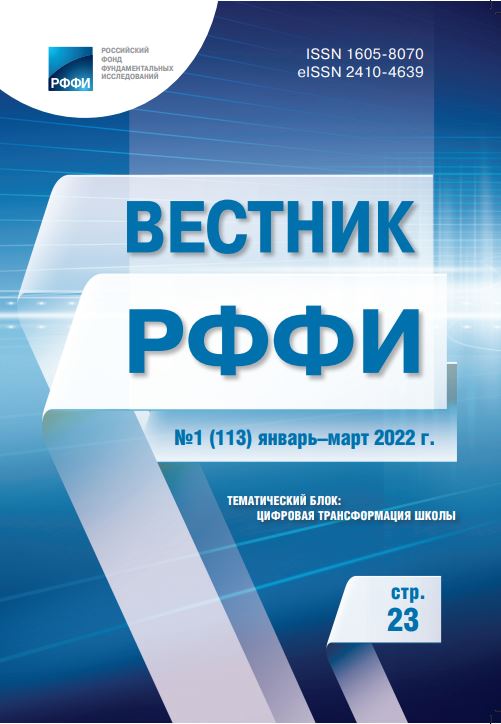Том 125, № 1 (2025): ТЕМАТИЧЕСКИЙ БЛОК: ФУНДАМЕНТАЛЬНЫЕ ПРОБЛЕМЫ ГРАВИТАЦИОННО-ВОЛНОВОЙ АСТРОНОМИИ И ГРАВИМЕТРИИ
- Год: 2025
- Статей: 7
- URL: https://ogarev-online.ru/1605-8070/issue/view/20106
-
Описание:
В рамках проведенных исследований выполнялись работы по двум направлениям: создания научных основ для реализации отечественных установок по регистрации гравитационных волн и разработки современных высокоточных гравиметров.
Весь выпуск
Колонка тематического редактора
О редакторе тематического блока члене-корреспонденте РАН профессоре Андрее Николаевиче Морозове. Аннотация к тематическому блоку.
 6-13
6-13


О Владиславе Ивановиче Пустовойте
 70-72
70-72


Тематический блок
Оптический метод регистрации высокочастотных гравитационных волн
Аннотация
Рассматривается возможность регистрации высокочастотных гравитационных волн космологических и астрофизических источников посредством гравитационно-оптического резонанса в интерферометрах Фабри – Перо. Рассмотрены основные характеристики высокочастотных реликтовых гравитационных волн, необходимые для оценки параметров детектора. Приведены характеристики гравитационно-волновых антенн, необходимые для регистрации высокочастотных реликтовых гравитационных волн с учетом теоретических ограничений на их плотность энергии. Найдено ограничение на частоту принципиально регистрируемых гравитационных волн посредством предложенного метода детектирования. Определен оптимальный диапазон частот f~3–10 МГц для настройки предложенного детектора. На основе работы созданного макета комплекса для регистрации высокочастотных гравитационных волн показано, что реализация данной схемы подразумевает корреляцию сигналов нескольких гравитационно-волновых антенн в течение характерного времени, необходимого для регистрации гравитационных волн посредством предложенного метода.
 14-19
14-19


Малогабаритный интерферометр с резонаторами Фабри – Перо для обнаружения гравитационных волн
Аннотация
Предлагается настольный лазерный интерферометр небольшого размера с резонаторами Фабри – Перо, состоящими из двух пространственно-распределенных «зеркал», для обнаружения гравитационных волн. Показано, что спектральное разрешение 10–23 см-1 может быть достигнуто при расстоянии между зеркалами всего 1–3 м. Исследовано влияние поглощения света в кристаллах на предельное разрешение таких резонаторов. Показана более высокая чувствительность интерферометра к коротковолновому лазерному излучению. Предложен метод обнаружения гравитационных волн, основанный на измерении корреляционной функции для интенсивностей излучения резонансных мод ненулевого порядка от двух плеч интерферометра Маха – Цандера.
 20-35
20-35


Повышение чувствительности интерферометрических измерений с использованием сжатого света
Аннотация
В данной работе исследована возможность использования квантового сжатого света, генерируемого при распространении ультракоротких оптических импульсов в среде с кубичной (керровской) нелинейностью, для повышения чувствительности интерферометрических измерений. В демонстрационном эксперименте с помощью сжатых состояний света, полученных в оптических волокнах с кубичной нелинейностью,
экспериментально продемонстрировано повышение чувствительности интерферометра на 4 дБ лучше уровня дробового шума, тогда как в предшествующих демонстрациях для повышения чувствительности использовались сжатые вакуумные состояния, генерировавшиеся в средах с квадратичной нелинейностью. Для этого использована оригинальная система на основе нелинейных поляризационно-поддерживающих волокон для сжатия квантовой неопределенности состояния поляризации фемтосекундных импульсов на уровне –5 дБ, обладающая высокой долговременной стабильностью без активных систем стабилизации.
 36-43
36-43


Фундаментальные шумы и пределы чувствительности интерферометрических детекторов гравитационных волн нового поколения
Аннотация
Работа направлена на развитие новой области науки – гравитационно-волновой астрономии и посвящена разработке методов повышения чувствительности интерферометрических детекторов гравитационных волн нового поколения, основанных на: 1) снижении уровня фундаментальных шумов в зеркалах интерферометров благодаря их охлаждению до низких температур, снижению диссипации в механических модах колебаний и уменьшению оптического поглощения в зеркалах (в качестве базового материала зеркал выбран монокристаллический кремний, хотя не исключается возможность использование сапфира и других материалов); 2) разработке эффективных методов квантовых измерений воздействия гравитационных волн на зеркала интерферометра, позволяющих снизить влияние квантовых шумов в системах регистрации сигналов гравитационно-волновых интерферометров и преодолеть стандартный квантовый предел чувствительности, а также методов подавления эффекта параметрической колебательной неустойчивости, возникающей в гравитационных интерферометрах при больших мощностях оптической накачки. Теоретический анализ, проведенный на основе последних достижений теории квантовых измерений и квантовой оптики, сочетается с детальными экспериментальными исследованиями процессов оптического поглощения и механической диссипации в элементах гравитационно-волновых детекторов.
 44-55
44-55


Поиск гравитационных сигналов коллапсирующих объектов в Галактике
Аннотация
Выполнялся мониторинг импульсных возмущений наземного фона гравитационного градиента, порождаемых астрофизическими и внутриземными катаклизмами. Основной целью являлась регистрация всплесков гравитационного излучения от релятивистских катастроф в Галактике, а также скрытых взрывных процессов внутренних земных структур. Экспериментальные исследования проводились с помощью оптоакустической гравитационной антенны ОГРАН, лазерного гравитационного интерферометра VIRGO и вспомогательной сейсмической аппаратуры в главной штольне Баксанской нейтринной обсерватории (БНО ИЯИ РАН). Выполнены измерения баланса акустических, оптических и электронных шумов антенны ОГРАН по отношению к шумам окружения. Проведены измерения сейсмического фона в БНО в низкочастотном диапазоне от 0.1 Гц до 10 Гц. Завершена обработка данных многолетних измерений низкочастотных гравиградиентных возмущений на интерферометре VIRGO с базой 3 км. Получена мажорирующая оценка магнитуды возмущений для колебаний внутреннего земного ядра. Решенные в данном проекте задачи демонстрируют его мультидисциплинарный характер, обеспечивающий получение новых знаний в астрофизике (уточнение физических процессов при слияниях звезд и коллапсах), ядерной физике (уточнение уравнений состояния нейтронных звезд) и геодинамике (процессы внутренней Земли и сейсмоакустики).
 56-69
56-69











